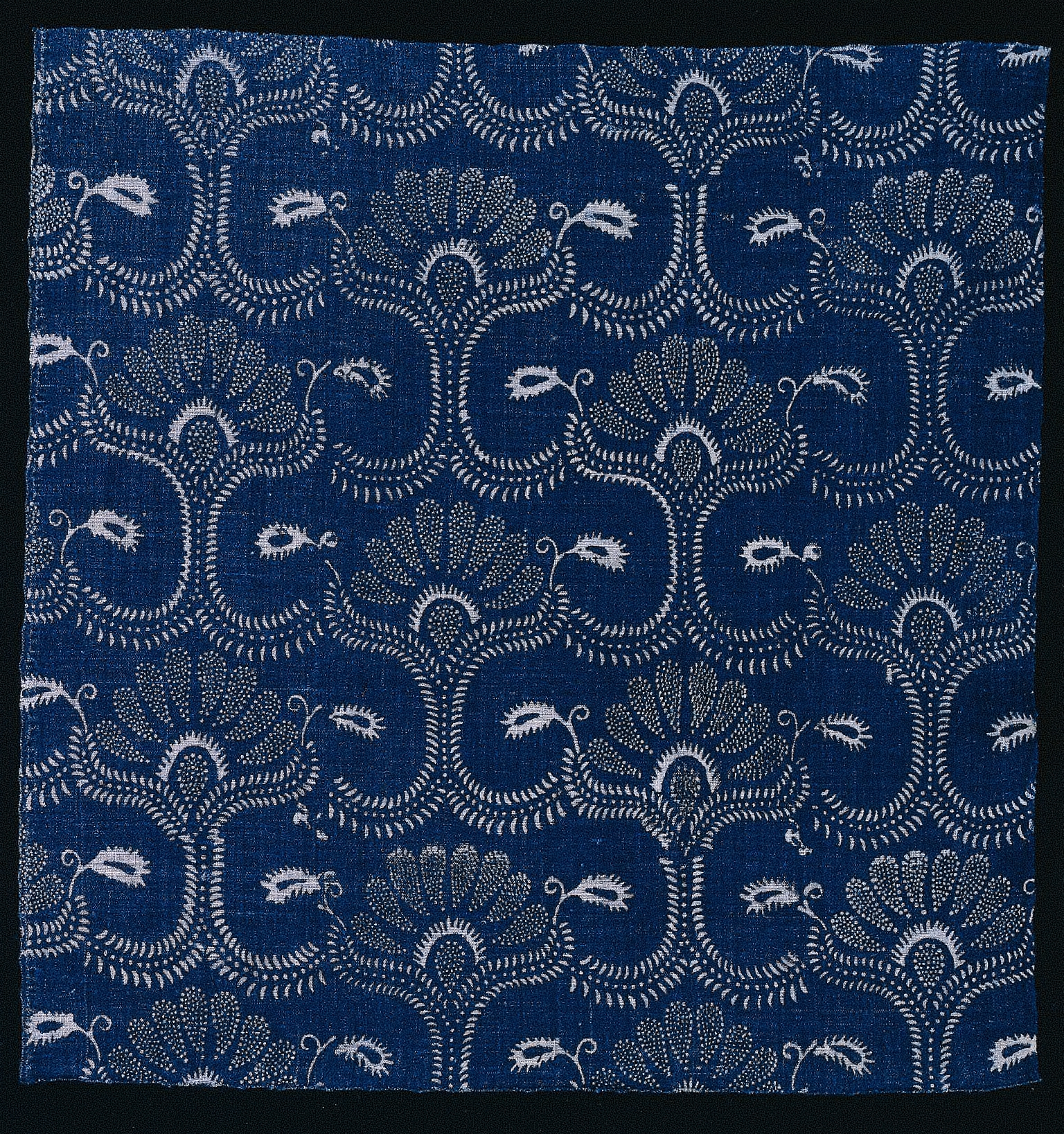The Cleveland Museum of Art
Collection Online as of April 24, 2024

Loom width with Stylized Leaf Design
1790
Overall: 54.6 x 53.3 cm (21 1/2 x 21 in.)
Gift of Gertrude Underhill 1935.113
Location: not on view
Description
This textile was produced in Alsace, France, located in the eastern part of the country near the border with Germany. Alsace was a leading area in the production of printed cotton. Printed cotton textiles were extremely popular in France in the late 1700s, due in part to an interest by Europeans in Indian textiles and designs. It was printed by means of a wax resist, in which a carved wood block was used to apply hot wax to the undyed surface of the fabric. After the textile was dyed with indigo, the wax was then removed by boiling the fabric in water and melting the wax so that the design was revealed.- Chapman, Stanley D., and Serge Chassagne. European Textile Printers in the Eighteenth Century: A Study of Peel and Oberkampf. London: Heinemann Educational, 1981.Schoeser, Mary, and Kathleen Dejardin. French Textiles, from 1760 to the Present. [London]: L. King, 1991.Laval, June K., and Greg Brown. Antique French Textiles for Designers. Atglen, PA: Schiffer Pub, 2004.Kumar, Prakash. Indigo Plantations and Science in Colonial India. New Delhi: Cambridge University Press, 2013.
- Science within Art. The Cleveland Museum of Art (organizer) (February 13-April 20, 1980).Techniques of Textile Printing. The Cleveland Museum of Art, Cleveland, OH (organizer) (October 11, 1948-May 29, 1949).
- {{cite web|title=Loom width with Stylized Leaf Design|url=false|author=|year=1790|access-date=24 April 2024|publisher=Cleveland Museum of Art}}
Source URL:
https://www.clevelandart.org/art/1935.113